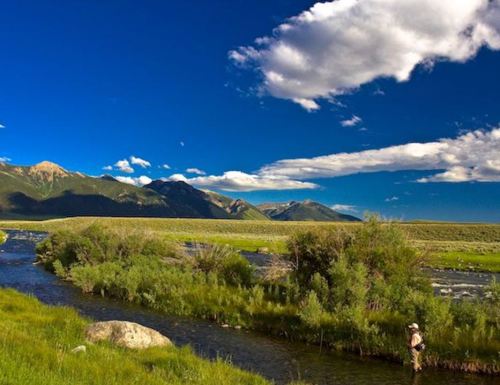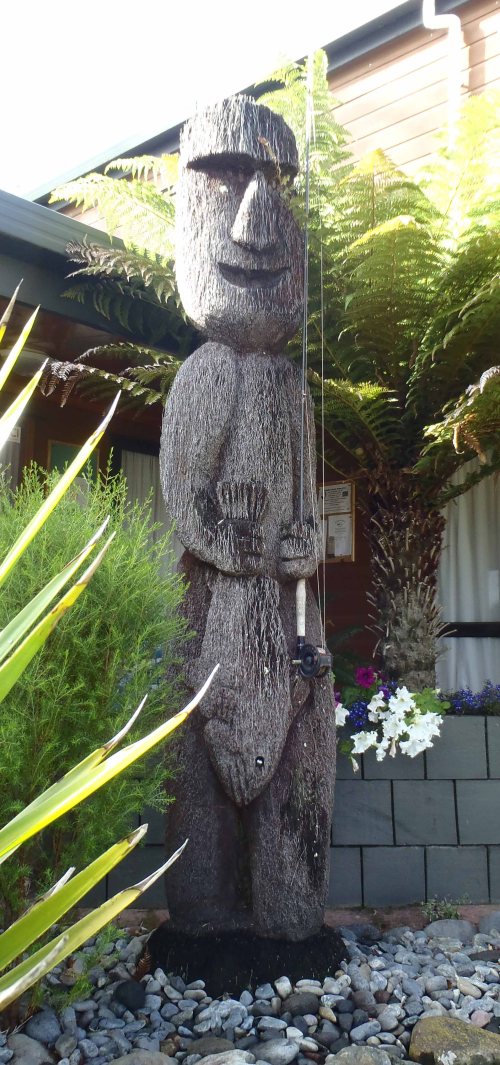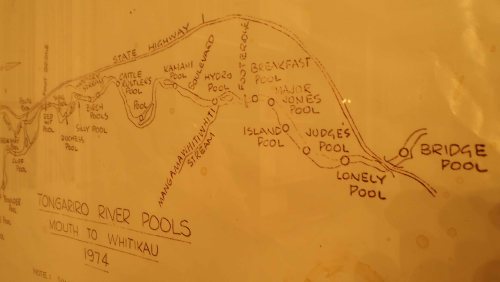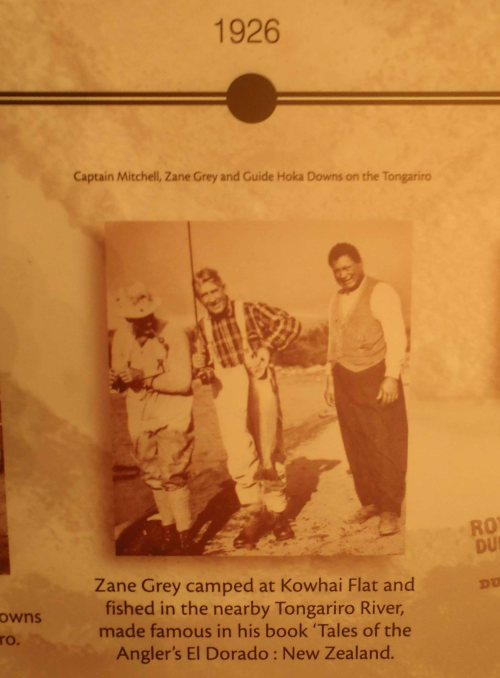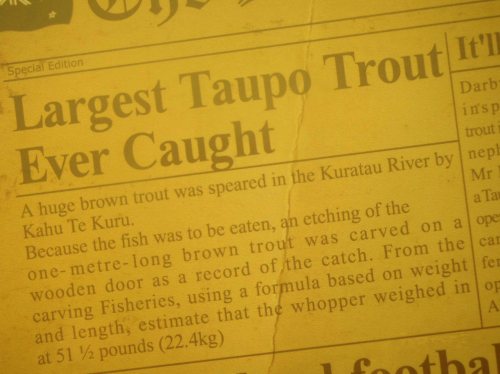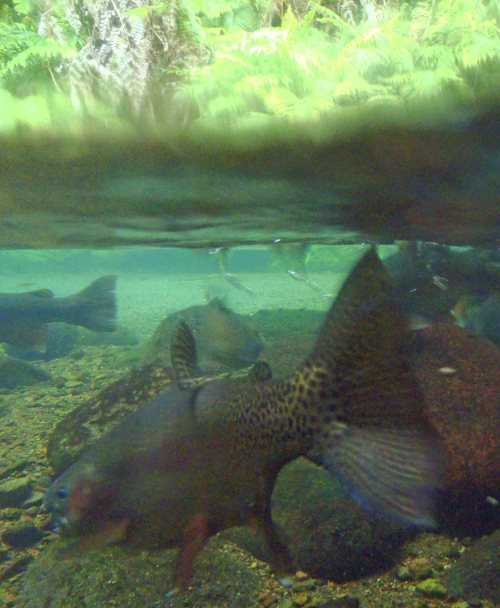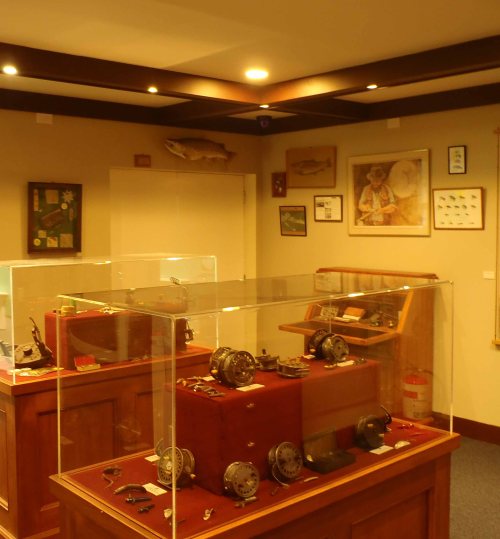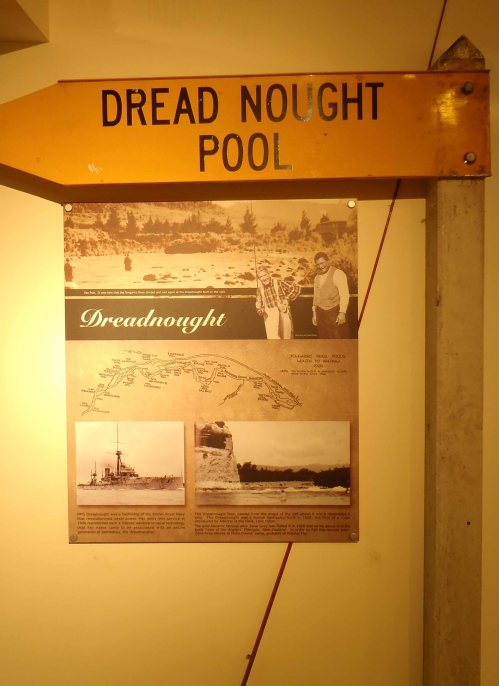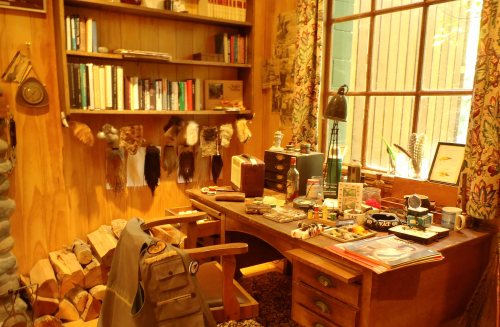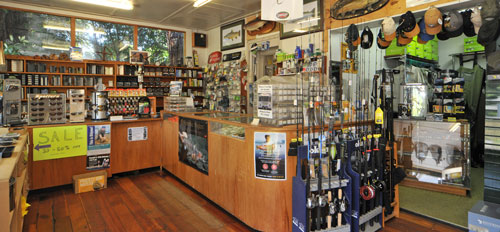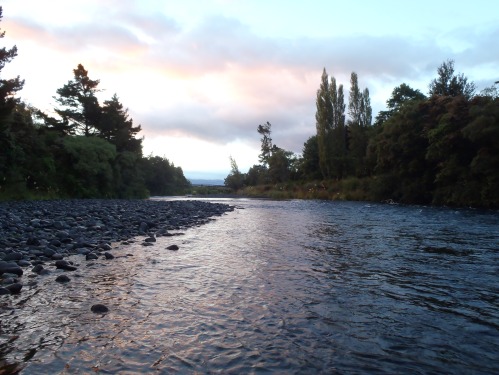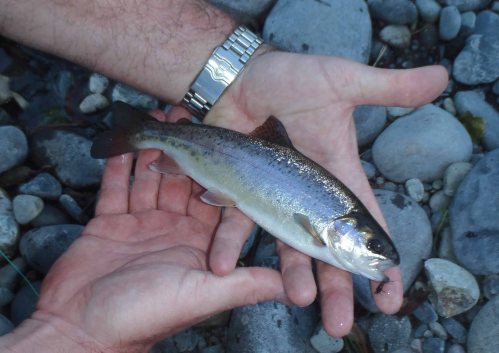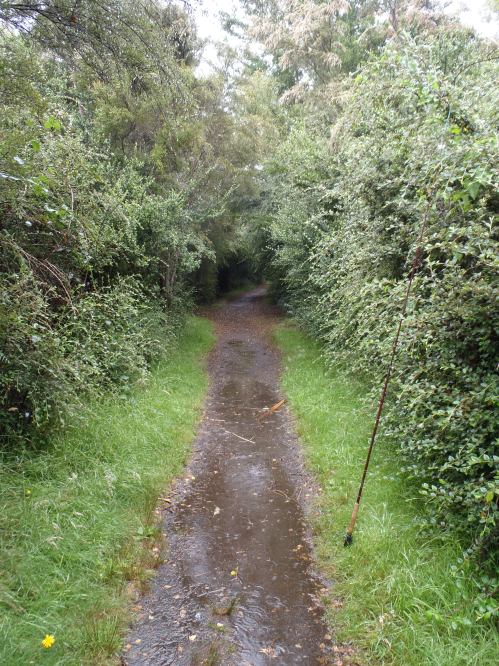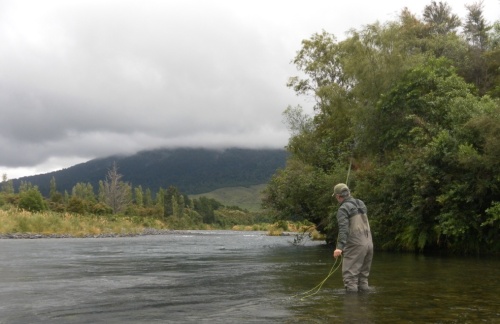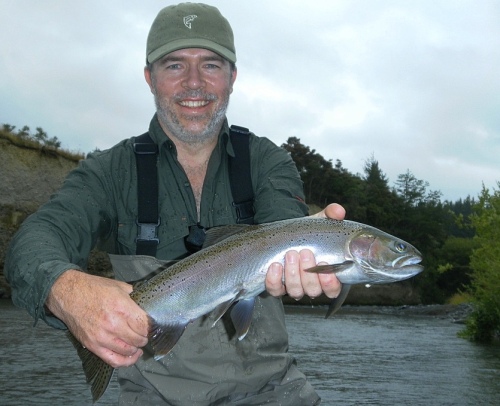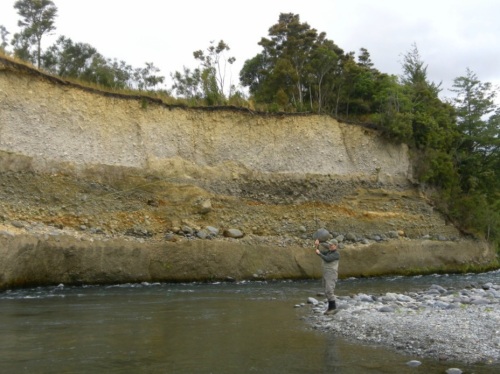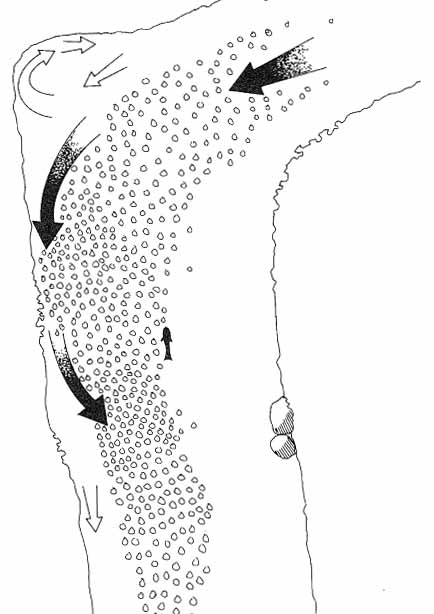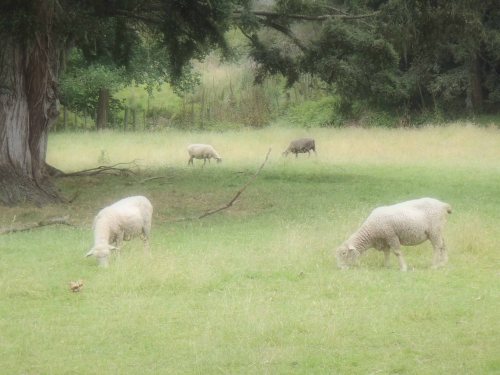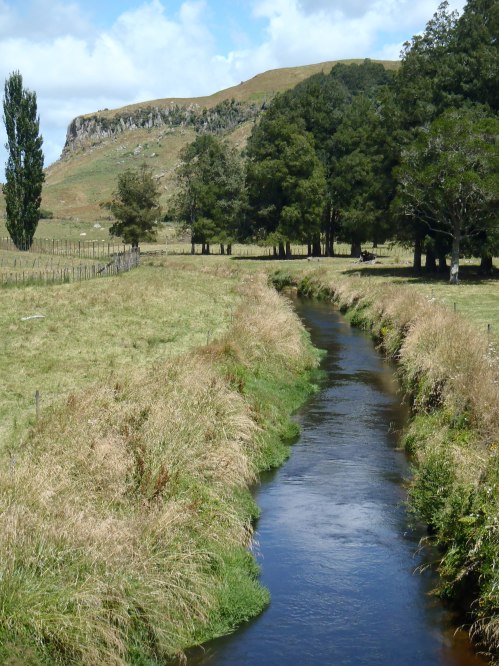A TASTE OF THE TONGARIRO
A few weeks ago, I was lucky enough to spend some time on the doorstep of the Tongariro River in New Zealand’s North Island. Along with unforgettable excursions to Tongariro National Park, the geothermal features of Rotarua and the glow worms of Waitomo Caves courtesy of the Legendary Black Water Rafting Company, there was, ahem, a little fishing.
This was, in fact, my honeymoon. I’ve said it before and I’ll say it again: how lucky am I to have the best wife ever? How many other wives would suggest one of the best fishing destinations in the world for their honeymoon?
Hopefully this entry paints the Tongariro as the true textbook fly fishing river it really is. Although I’ve never been to Montana, it’s the kind of water I liken to the Madison, below.
On the Tongariro, perfect riffles, swift runs and deep pools unfold around every bend, just like on the Madison. Credit where credit’s due – the photo above comes from Firehole Ranch’s website.
Our trip began in Auckland. After a couple of hours on the highway, we arrived at Kaimanawa Lodge in Turangi, where we were greeted by a fantastic carving of a Maori warrior clutching his trophy and fly rod.
Trout were present on all walls of the main lodge, along with paintings and illustrations of fishy subjects like the river, flies and tackle. This was going to be my kinda holiday!
I’m itching to write about the good fortune Amanda and I enjoyed while fishing. But before I do, a little about the background of this iconic river and region.
Derek Grzelewski tells us “In this country of trout, no place is steeped in more tradition and angling lore than Taupo. On rivers like the Tongariro, Tauranga-Taupo and Waitahanui, every pool has a name and a history…”
Derek continues.
“In 1883, the Auckland Acclimatisation Society hatched and reared the country’s first batch of rainbow trout, which most likely came from Sonoma Creek, near San Francisco, where they are known as steelheads (sea-run rainbows) and grow up to 15kg.”
In 1926, American author Zane Grey arrived on the scene, and made the place famous in “Tales of the Angler’s Eldorado, New Zealand”.
The rest, as they say, is history. Decades of enormous trout and fabulous fishing, to be more precise.
The three photos above were taken at Tongariro National Trout Centre, which includes a collection of fishing memorabilia and a working hatchery. The highlight of our visit to this little gem was the viewing window that gave us a trout’s eye view into Waihukahuka Stream, below.
One of the fly fishing memorabilia rooms.
An exhibit about Dreadnought Pool, which got its name because of how closely the nearby cliff resembles the bow of HMS Dreadnought.
A recreation of a fishing retreat inside a country hut, complete with half-full bottle of Grants and VAT 69 ashtray.
Ready to fish? Not quite. Before wetting our lines, Amanda and I thought we should pay a visit to one of the local tackle shops for a bit of a chin-wag.
Creel Tackle House is part of Creel Lodge which boasts private access to the river. It opens at 7:00am, making it a convenient first stop on an early morning fishing session.
Although there aren’t any staff in the photo, trust me when I say they’re there. In fact, they’re particularly helpful in supplying those specialty items you’ll need on the Tongariro, like wool strike indicators.
We set ourselves up with some flies that have proven themselves on the river: a couple of tungsten “bombs”, as the Kiwis call them, and a handful of more traditional Pheasant Tail and Caddis Emerger nymphs.
Then, like two little eager beavers, we skipped down to Breakfast Pool. A five minute walk from Kaimanawa Lodge.
Our first session was encouraging. After drifting our nymphs through the pool, I pulled this in.
It would almost be legal in New South Wales, but far from it on the Tongariro. The legal size limit here is 40 centimetres, which is testament to the quality of the fishery.
Not to be outdone, Amanda kept-up by landing one of a similar size a short ten minutes later. Little did we know it, but better fishing was just around the corner, both literally and figuratively.
Walking home, my attention turned to angler access. With such a long history in fly fishing, I wasn’t surprised to see lots of access points. What was surprising was the quality of those access points. The pathways that surround the river are kept in magnificent shape.
Getting to and from your fishing destination is more like a pleasant walk in the country, as opposed to tangling with blackberries and sinking in marshland like on some rivers.
This place truly is paradise. And it’s only half-a-day or so from Sydney.
A couple of days later, we caught up with Tongariro guide Mike Hughes.
Mike’s originally from Wales. Big plus.
The way I see it, you should listen to the Welsh when it comes to fly fishing – they’ve been doing it long enough, that’s for sure.
I asked him if he and his wife would ever consider moving back to the UK.
“No’a chance.”
After a quick glance upstream and down, I replied “I guess you wouldn’t, would you!”
Jokes aside, Mike is a professional beyond all expectations. Expert advice, high quality gear, excellent stream-side manner, encouraging… the whole package.
He took us to a couple of well-known pools, and some that weren’t as well-known. One of the better-known spots appears below.
That’s one of the best things about enlisting the help of a guide like Mike on a foreign river: they’ll get you off the beaten track and onto fish. Fast.
Amanda opened her account first by netting a nice hen. I followed with a hen of a similar size.
I hooked up three more times on this trip with fish of equal or bigger size – one fish threw the hook and the tippet broke on the others.
One of the fish I missed deserves some special attention. Drifting a big bomb just downstream of a bend, I felt that lovely wriggle on the end of my line.
I’ve mentioned in previous entries about how much I respect Tom Rosenbauer. The diagram below, again from Rosenbauer’s “The Orvis Guide to Reading Trout Streams”, pinpoints the exact location of where the fish was sitting.
Uncanny.
So what did I learn from this trip?
First of all, it’s likely that Amanda will soon start to out-fish me!
Seriously, as I’ve rarely had the chance to fight large trout, I learned that it’s important to be firm, yet forgiving.
See, where I usually fish, most of the trout are fairly small – 25 centimetres or so. Landing them simply involves gently swinging my rod to the bank, where the little critters flop around until I can carefully remove the hook, resuscitate them if necessary, and send them back on their merry way into the river.
I learned it’s a bit different with larger trout. Let the fish run if it needs to, keep the tension on – not too tight – and for goodness sake, check your leader and tippet often for wind knots and wear. When fighting big fish, even the slightest blemish on your tippet can have a disastrous effect on your catch rate.
Wise words, eh bro?
On the morning of our last day in Turangi, it was time to bid the Tongariro farewell. I almost cried.
Driving back to Auckland, we passed through the picturesque farm country that is Waikato.
We stopped to chat with some locals.
We also stopped to marvel at a couple of the superb looking spring creeks that wind their way through the countryside, like the Mokau River, below.
Are there any trout in Waikato? You betcha. So maybe, just maybe, our next trip to New Zealand will include a farm stay in that pretty little region. And we haven’t been to the fabled South Island yet, so we’ll need to go there. And, of course, we’ll have to go back to the Tongariro.
Dunno how we’re going to fit all that in…

